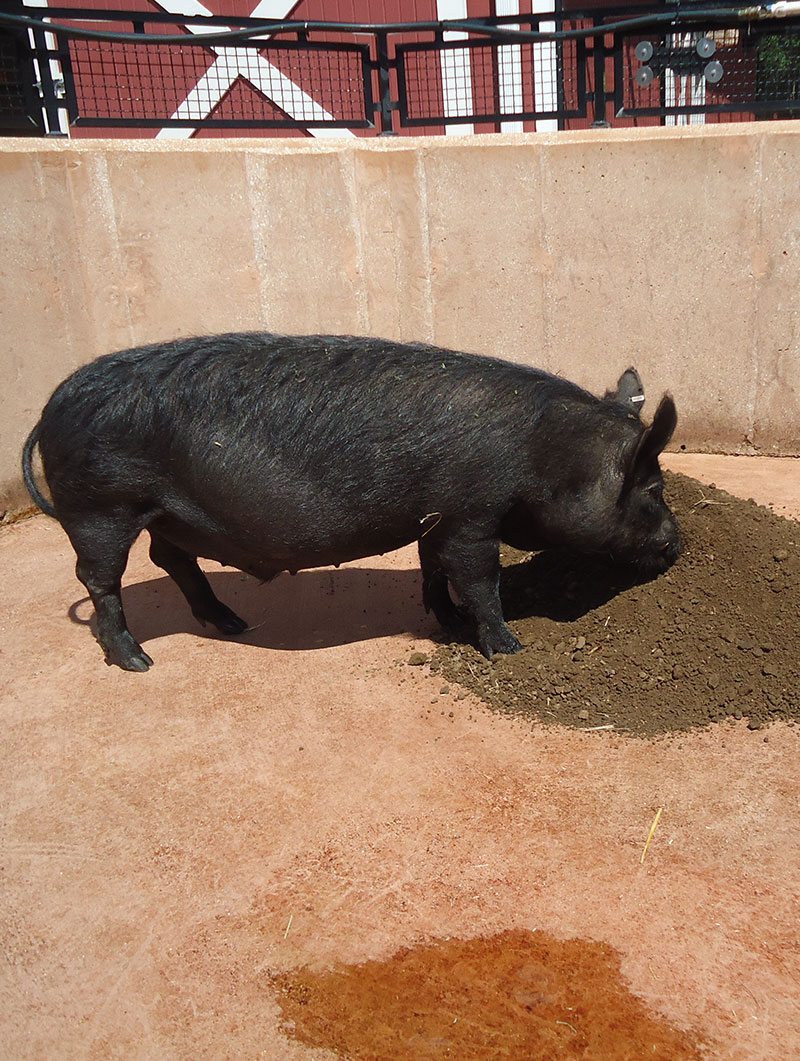Guinea Hogs
Sus scrofa
Description:
The Guinea hog is a small breed of pig. It is black in color and covered with bristly hair. It has a curly tail.
Size:
Guinea hogs weigh 150-300 pounds (68.0-136.0 kg) and stand about 22-27 inches (55.9-68.6 cm) tall.
Adaptations:
- The Guinea hog has an especially flexible snout, which is helpful when foraging for food.
- Pigs in general have an excellent sense of smell. They can locate very small amounts of food just by using their noses.
- Pigs have large, thin ears which lose heat easily and help them to stay cool.
Diet:
Guinea hogs can forage for many different food items, including various plants, eggs, and small animals such as insects and mice. The Guinea hogs at Cosley Zoo are fed a commercial diet, hay, and a variety of fresh produce.
Reproduction:
The gestation period of a Guinea hog is 115-120 days. Sows (females) give birth to up to 10 piglets per litter.
Shelter and space needs:
On small farms, Guinea hogs can forage for their own food, and may need to be fed only limited supplements. They require access to water or mud to stay cool and shelter from extreme weather conditions.
Life expectancy:
10-15 years.
Relationship with man:
Guinea hogs are smaller than other types of domestic pigs, and are said to have better temperaments. They can often be found in petting zoos. They can be raised for meat, although usually on a small scale. On small family farms, Guinea hogs can be used for pest control and tilling the soil. Guinea hogs are listed as “threatened” by the American Livestock Breeds Conservancy. This means that there fewer than 1,000 registered animals in North America and fewer than 5,000 in the world.
Fun Facts:
- Although we often use the word “pig” to refer to someone who is messy, pigs are actually very clean animals. Unlike many other farm animals, they keep their bathroom area completely separate from their eating and sleeping areas.
- Did you ever wonder why pigs roll in the mud so much? It’s not because they like to be dirty, but because they can’t sweat! The mud helps them to cool off, as well as protect the pigs from sunburn.
- At one time, there were more Guinea hogs than any other type of hog on farms in the southeast US.
- Although their names are similar, Guinea hogs and guinea pigs are unrelated. The guinea pig that is commonly kept as a pet is actually a type of rodent.






